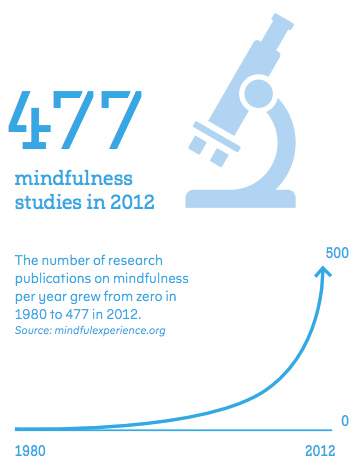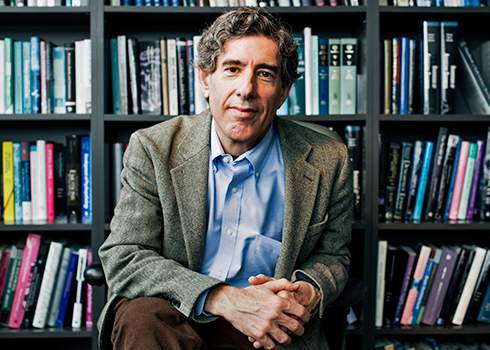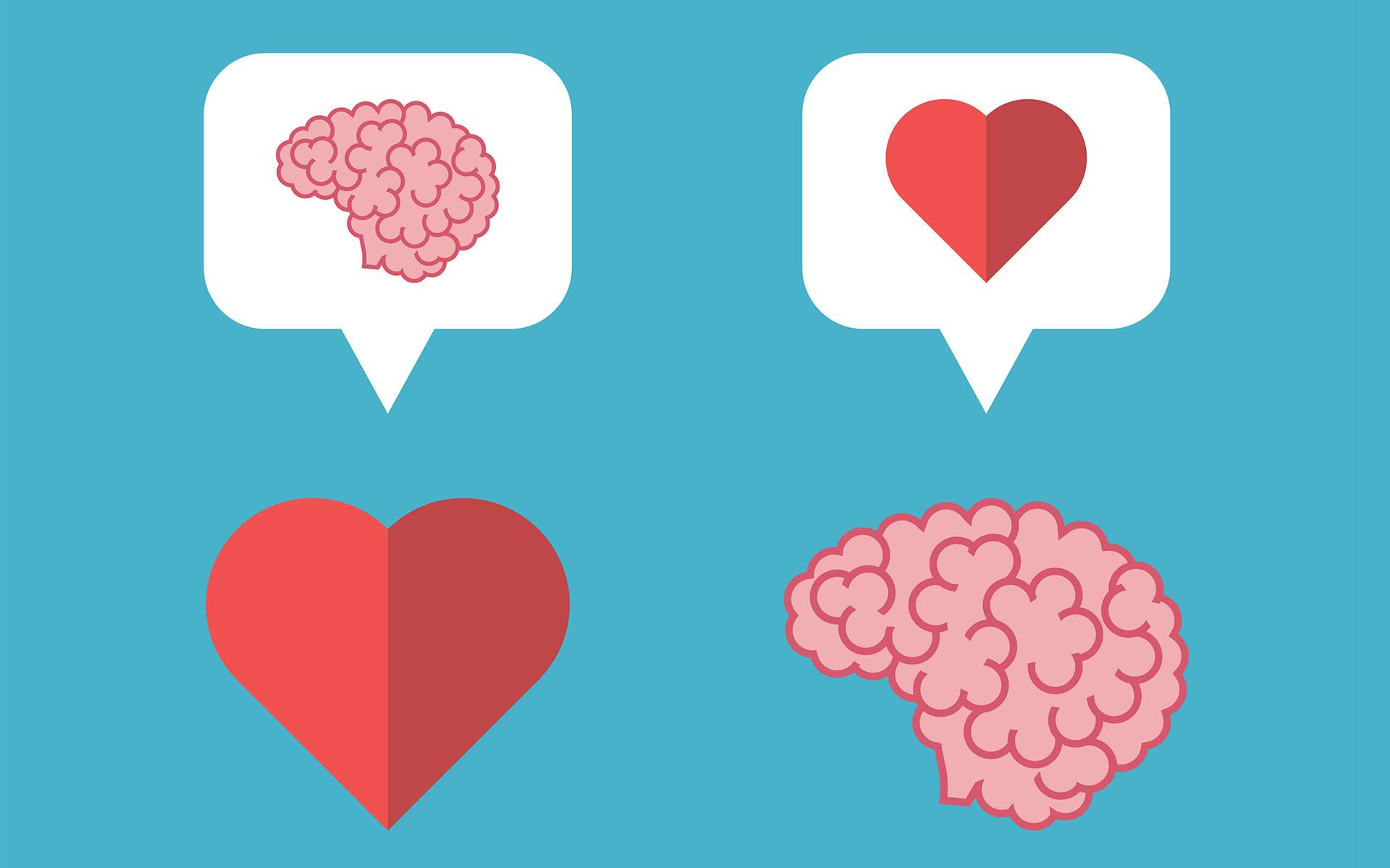Your brain is unlike any other organ in the body—it’s designed to adapt constantly. “The brain is not static. It is meant to change,” says Richie Davidson, renowned neuroscientist and one of the world’s leading experts on the impact of contemplative practices, such as meditation, on the brain. He is the founder of the Center for Investigating Healthy Minds (CIHM) at the Waisman Center, University of Wisconsin-Madison.
Much of the research currently underway at CIHM involves training the brain and measuring those changes and is being done by the 60-65 scientists, post-docs, research assistants, and graduate students under Davidson’s direction. There are more than 20 studies underway. Some examine mental and physical health and illness. Others look at the effects of meditation and compassion training. Others consider the effect on our brains of acts of compassion, and still others look at child development and education. Here’s a sample:
Meditation and Compassion Training
Differential Effects of a Mindfulness-Based Stress Reduction (MBSR) Program or a Health Enhancement Program on the Neural Responses to Pain in Novices
In 1979, Jon Kabat-Zinn recruited chronically ill patients not responding well to traditional treatments to participate in his newly formed eight-week stress-reduction program, which we now call MBSR. Since then, substantial research has mounted demonstrating how mindfulness-based interventions improve mental and physical health—comparably so to other psychological interventions.

However, while MBSR has been shown in clinical settings to be effective with patients suffering from chronic pain, little is known about the brain mechanisms underlying how MBSR alleviates, or regulates, pain. In this study, the CIHM will compare MBSR to another intervention program, the Health-Enhancement Program (HEP): a class about nutrition, music therapy, functional movement, and light physical exercises.
Researchers will use fMRI (functional magnetic resonance imaging), which makes a moving picture of brain activity, to observe beginner meditators. After doing a pain task in the fMRI scanner, these meditation-naïve participants are randomly assigned to either the MBSR or HEP programs. The participants then do the pain task again after the eight-week interventions, and four months later. Researchers will monitor changes across time in the participants’ capacity to regulate pain.
Differential Effects of Two Meditation Practices on the Neural Responses to Pain in Expert Meditators
Pain is an unpleasant experience, both for our emotions and our senses. But pain can be regulated in the brain by using different cognitive mechanisms. In this study, researchers compare the regulatory qualities of two meditation practices during a pain-inducing task involving heat: Focused Attention (FA), including directed and sustain attention focus both on and off the heat source, and Open Presence (OP), or effortless, open awareness of whatever is occurring in the present moment, without reacting, rejecting, or absorbing the contents of the experience. Researchers will use fMRI to compare how expert and novice meditators fare, comparing the differential effect of OP versus FA on the neural responses to pain.
Changing Your Brain and Generosity Through Compassion Meditation Training
Is compassion an emotional skill that can be trained? CIHM predicted that practicing compassion would increase generous behavior as well as brain responses to human suffering. Researchers split participants into two groups. One group completed two weeks of daily online training in compassion meditation, and a “control group” (e.g. a group that tests whether the same improvements could be demonstrated, even without MBSR training) who learned how to reframe stressful thoughts. All participants had their brains scanned in an fMRI machine while they looked at a series of images, some of which depicted people in pain, such as a burn victim or a crying child.
After the two weeks were up, CIHM found that participants who learned compassion were more generous in an economic exchange game compared to the control group. Greater generosity in the compassion group was associated with changes in the brain’s response to human suffering in regions involved in empathy and increasing positive emotions.
Download audio files from the Compassion Meditation Training and Cognitive Reappraisal Training.
Center Grant: The Wisconsin Center for the Neuroscience and Psychophysiology of Meditation
This large-scale, five-year research study is focused on the brain mechanisms of two forms of meditation: mindfulness-based meditation and a form of meditation designed to cultivate compassion and loving kindness.
It explores how meditation works in changing the way the brain regulates emotion; using meditation to train for attention, fear conditioning, and pain regulation; and the impact of meditation on brain plasticity.
While research has shown that meditation can help people regulate their emotions and even control reactions to pain, little is known about the mechanisms by which these changes occur. “These projects will help us understand whether meditation does indeed produce long-lasting changes in the brain, what these changes are, and whether these practices may be helpful in the daily life of people of those who are suffer from certain health problems as well as those who are ‘normal’,” says Davidson.
Economic Decision-making and Well-being
The traditions from which meditation and mental training practices were borrowed suggest that they affect individual well-being and encourage pro-social behavior like compassion and kindness. Investigating this claim, this study considers whether having a solid or flexible “self-schema” affects our tendency to either hold on to or let go of the experience of an emotion, and how this in turn influences the response to pleasant and unpleasant life experiences.
The phases of this study are to:
- Develop and validate behavioral and questionnaire measures of the self-schema implicated by the traditional accounts, in particular, the spectrum of fixed versus flexible conception of the self and its boundaries.
- Test the relationship between these measures and pro-social behavior, measured using economic decision-making tasks developed in this lab.
- Test the relationship between these measures and well-being, by examining the response to pain stimuli in the fMRI scanner.
- Test if changes in self-schema mediate the effects of meditation practice on the response to pain.
This project is supported by the John Templeton Foundation Grant for Cultivating virtuous qualities of character: An interdisciplinary initiative.
Physical Health and Illness
The Role of Stress and Emotions in Asthma
Can mindfulness modulate or reduce symptoms and inflammation in asthmatic individuals? What roles do stress and emotions play? Using neuroimaging, researchers will measure brain activity associated with the experience of stress and observe if what’s playing out in the brain is predictive of later development of inflammation and asthma-related symptoms.
For the future, this kind of research could contribute to “behavioural interventions” for those with asthma, such as MBSR. And by “behavioral intervention” or “neurally inspired behavioral therapy,” the CIHM is talking about a kind of therapy that identifies the brain activity underlying an emotional trait you wish to change, and then targets this brain activity with mental exercises designed to alter it. The result is a healthier “emotional style,” notes Davidson in “Rewiring Your Emotions” from the October 2013 issue of Mindful magazine.
YogAutism (formerly known as Spectrum Yoga Therapy)
In partnership with YogAutism in Madison, CIHM is conducting a study examining the effects of yoga and breathing on autonomic arousal and stress hormone levels in individuals on the Autism spectrum. This program first focuses students on feeling calm and capable of participating and then brings them through a series of movements that fully engage the diaphragm and optimizes healthy breathing.
Psychological Effects of Tai Chi Training
Measuring how tai chi affects cognitive function and balance in young adults. Tai chi is an ancient Chinese practice involving slow flowing movements with mental focus on the body. Participants (students in a UW-Madison semester-long introductory tai chi course) will undergo testing. Insights gained from this research could lead to studies on the efficacy of tai chi as a therapy for Deficit Hyperactivity Disorder (ADHD) in young adults and adolescents.
Veterans and Anxiety
Helping American veterans returning from war, the CIHM aims is to expand treatment options available for PTSD and make inroads to understanding the brain mechanisms involved. Participants in this pilot study took part in programs involving breathing exercises and yoga. Researchers collected self-report data from participants, which included improved sleep, a reduction in chronic pain, and an increased sense of optimism, among other benefits.
Researchers also scanned the brains of participants as they underwent a task best described as a “threat-of-shock paradigm.” Study author Dan Grupe describes it this way: participants would see one of two colored squares, one of them indicating the participant could get a shock. “We looked at the brain activity when this kind of unpredictable future threat was present,” says Grupe,” one that may or may not happen, and if it does happen, you won’t know when to expect it.”
Education and Development
Mindfulness Study with Fifth-Grade Students and Teachers
In this pilot study, an experienced mindfulness instructor from CIHM taught teachers and students in the Madison Metropolitan School District a mindfulness course that spanned over 10 weeks, totaling 10 hours of instruction.
Students in four classrooms were divided into active and control groups, with the active group receiving an age-appropriate mindfulness curriculum, including core elements of attention to the breath and body and cultivating awareness of feelings, thoughts and sensations.
Students in the active group reported feeling more in control and responsible for their actions, made fewer errors, and improved in their use of strategy on a problem-solving task involving working memory. Additionally, teachers observed improved emotion regulation in these students after the training.
Kindness Curriculum
The focus of CIHM’s “Kindness Curriculum,” now being tested in Madison schools, is three-fold: social and emotional learning, emotion regulation, and pro-social skills. “We hope developing these skills will increase social and emotional health and enable kids to be more available for learning,” says study co-author Laura Pinger, who has 30 years’ teaching experience, including teaching mindfulness.
While data gathering and analysis is ongoing, initial findings indicate that children who took part showed “improved response times on computer measures of attention and larger gains in social competence as compared to the children who did not receive the curriculum,” Pinger notes.
Preview the Kindness Curriculum.
Video games and Well-Being
This study, funded by the Bill and Melinda Gates Foundation, is developing two video games for adolescents—currently being tested on 11- and 12-year-olds. One of the games is designed to cultivate mindful awareness, particularly awareness of the body. The other, “Crystals of Kaydor,” is designed to cultivate empathy, pro-social behavior, and kindness.
“Crystals of Kaydor” asks a player to navigate through impressive graphics to an Earthlike planet inhabited by alien creatures who exhibit human emotional traits. Part of the challenge of the game is, upon encountering Kaydor-ians, the player has to correctly identify which emotion they’re exhibiting (surprise, happiness, fear, etc.), then move a dial to indicate the points when those emotions become heightened.
“We do MRI scans with the kids before and after they play the games,” Davidson explains. “We give them many different kinds of behavioral tests and apply other kinds of measures. We will be following these kids for some time.”
While details are not being shared at this early stage, the CIHM scientists involved in the project had difficulty hiding their excitement about this work. Davidson will say one thing for certain, though: An hour and a half of playing a video game can actually produce a structural change in the brain. “Literally,” he says, “a change that is measurable.”
The current project he says is designed to “ask the question of whether we can use video games as a novel vehicle for training the mind in ways that may be more wholesome than Grand Theft Auto, or other video games,” Davidson says. “There is absolutely no question at this point in time, based upon the science that’s out there, that violent video games have negative emotional consequences.
“So it’s our aspiration to try to convince those relevant interested parties—both parents and kids, as well as game designers and the gaming industry—that it’s actually possible to create games that are interesting and captivating that kids will want to play that are pro-social and can cultivate healthy qualities of mind.”
Teacher Wellness Study
This study investigates teacher stress in the classroom and how mindfulness can play a role in addressing psychological symptoms and burnout, improve attention, and increase self-compassion. This study reports results from a randomized controlled pilot trial of a modified Mindfulness-Based Stress Reduction course (MBSR) adapted specifically for teachers.
Results suggest that the course may be a promising intervention, with participants showing significant reductions in stress symptoms and improved focus. In contrast, the teacher group that did not partake in the MBSR program showed declines in cortisol functioning over time and marginally significant increases in burnout.
Read the pilot study article published in the journal Mind, Brain, and Education.
Well-being and Behaviour
Investigating Forgiveness Behaviors
“Often the way to discover the meaning of forgiveness is to realize the behaviors that are forgiveness.” This study explores the relationship between behavior, trait forgiveness, and physiological responding. The project is focused on examining the relationship between forgiveness, behavior (as measured by an economic decision-making task), and muscle tension (measured by a corrugator electromyograph, a technique for recording electrical activity produced by skeletal muscles) among healthy adults who have been transgressed by close loved ones.
The Neuroscience of Pro-Social Valuation
How do we assign value to one another? This is a paramount question for the science of altruism. The CIHM is charting parts of the brain involved in the process by looking at the brains of participants through a magnetic resonance imaging (MRI) scanner while they decide to give money to a stranger—or themselves.
This project is supported by the John Templeton Foundation Grant for Cultivating virtuous qualities of character: An interdisciplinary initiative.
Individual Differences in Real World Positive Emotions and their Biological Correlates
Positive emotion and the ability to sustain it (i.e. “savoring”) is essential to health and well-being, yet most research on emotion has been interested in negative emotion. Using fMRI, researchers will track the neural correlates of positive emotion in participants who are asked to use a reward game during everyday activities—to better understand “savoring” and individual differences in positive emotion over time. Summarizing past research in this area, CIHM notes:
We have found that individuals who show the most ability to sustain activity in the Nucleus Accumbens, a brain area involved in reward and positive affect, also report the highest levels of psychological well-being in their lives, while individuals with depression show less sustained activity in this brain region.
The research will track activity in these two regions over time. The aim is to create interventions to sustain positive emotions as a method for combatting depression.
Positive Emotion and Behavior
By studying emotional reactions in participants—when they smile, frown, etc.—this research investigates the associations between positive emotions and different forms of empathy. Participants watched video clips from the television show, “Extreme Makeover: Home Edition,” while researchers measured their reactions. Participants also had to partake in an altruistic decision-making task involving ranking book titles from the videos and selecting donations.
Exploring Positive Qualities of Attention
How do we cultivate undivided attention to a person or task? It’s a valuable yet challenging capacity to develop. Using neuroimaging and a game designed to be sensitive to divided attention—like mind wandering—researchers will investigate the brain processes supporting undivided attention. This kind of research “may provide a springboard for an exploration of how such attention is trained,” CIHM notes.
This project is supported by the John Templeton Foundation Grant for Cultivating virtuous qualities of character: An interdisciplinary initiative.
This web extra provides additional information related to an article titled, “Stalking the Meditating Brain,” which appeared in the August 2014 issue of Mindful magazine.





